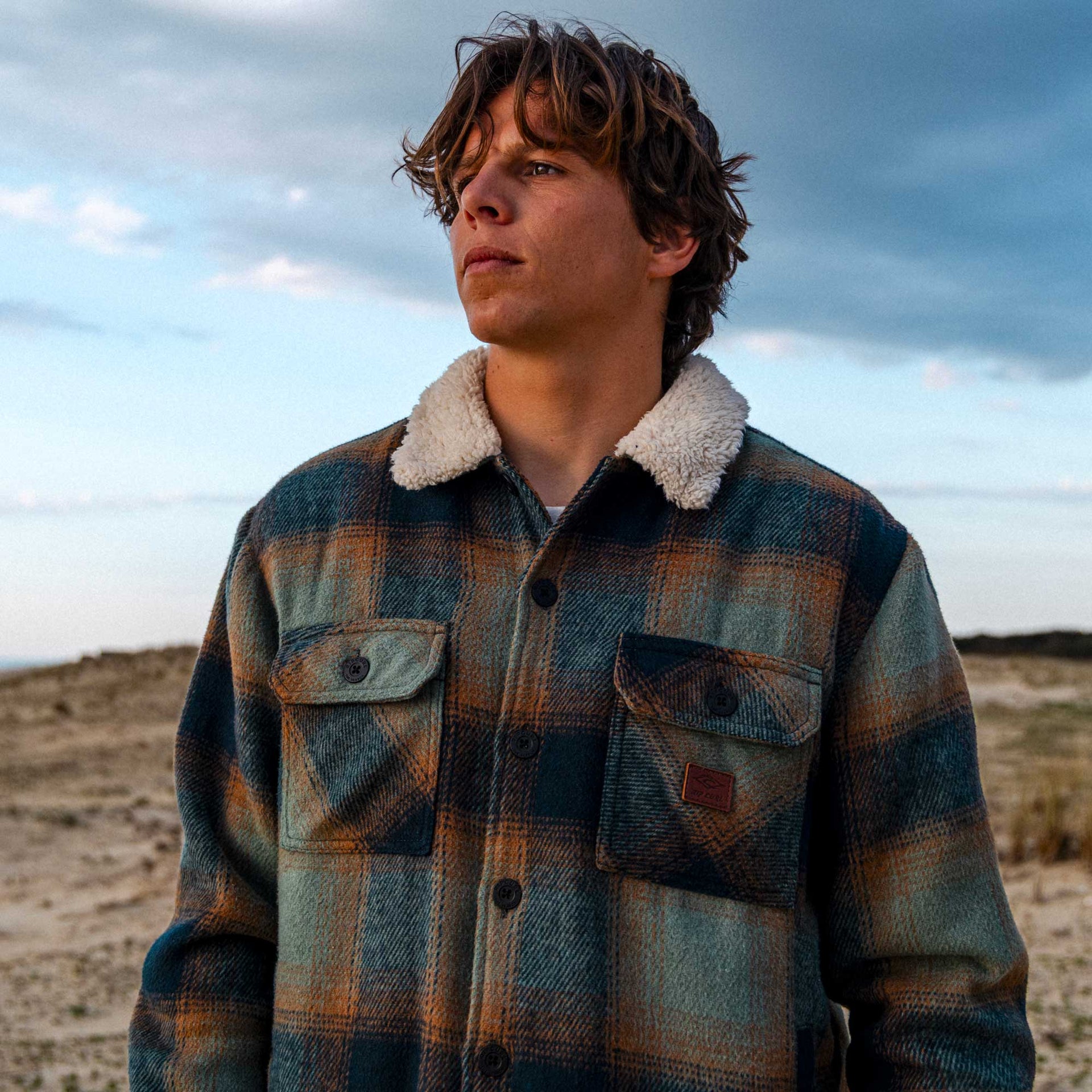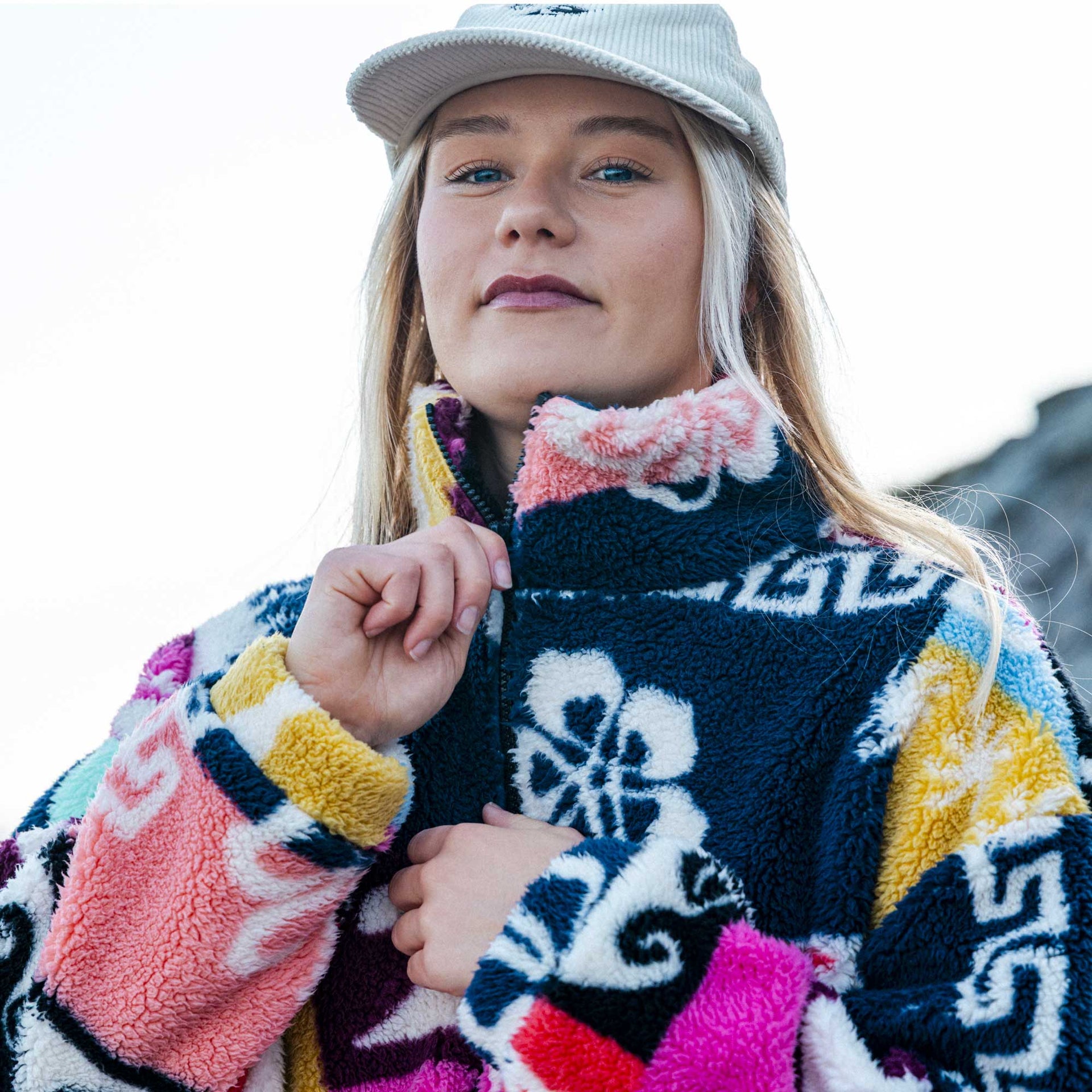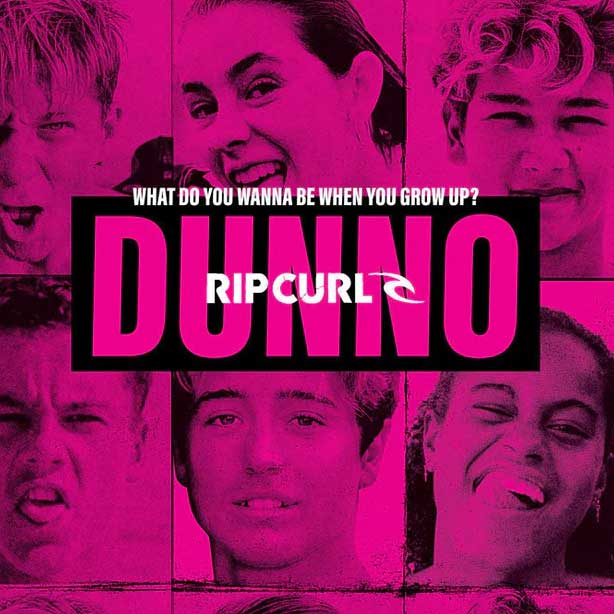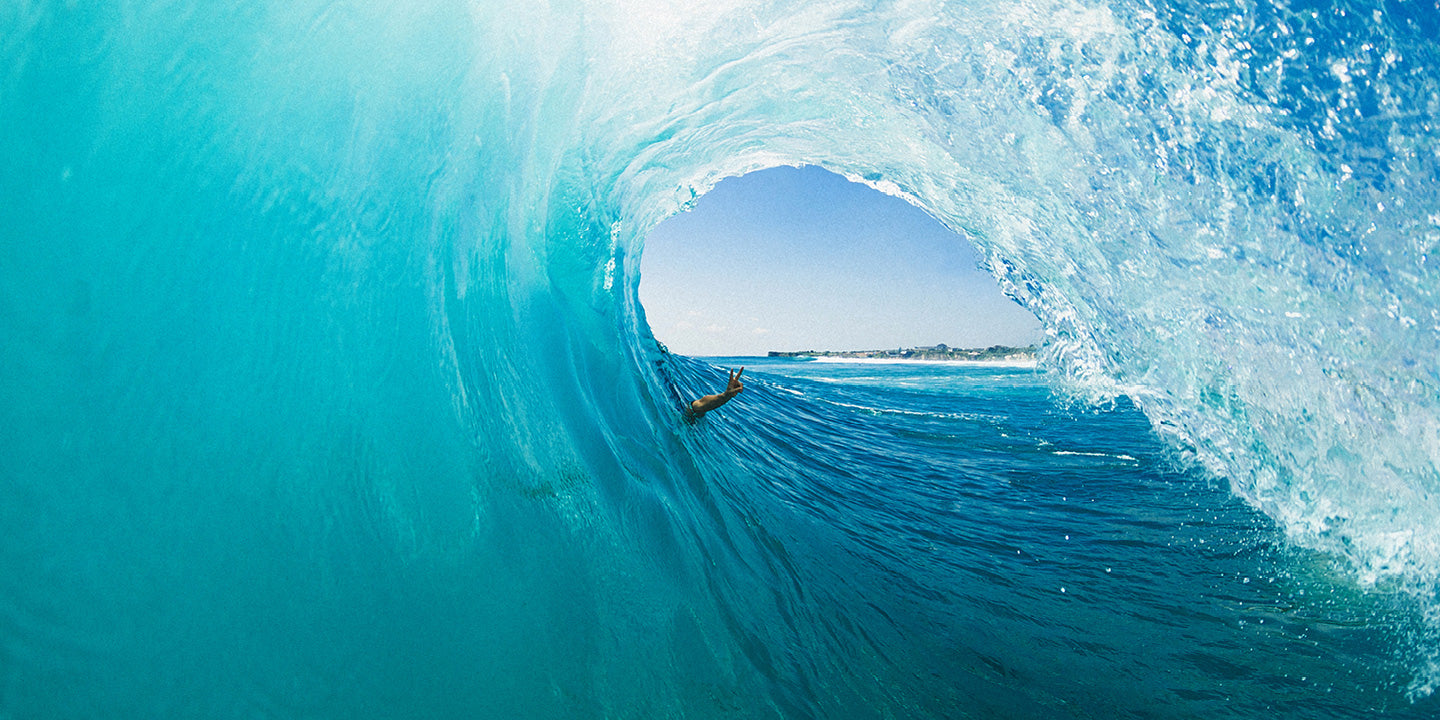Beginner's Guide to Surfing: Equipment, Techniques, and Progression
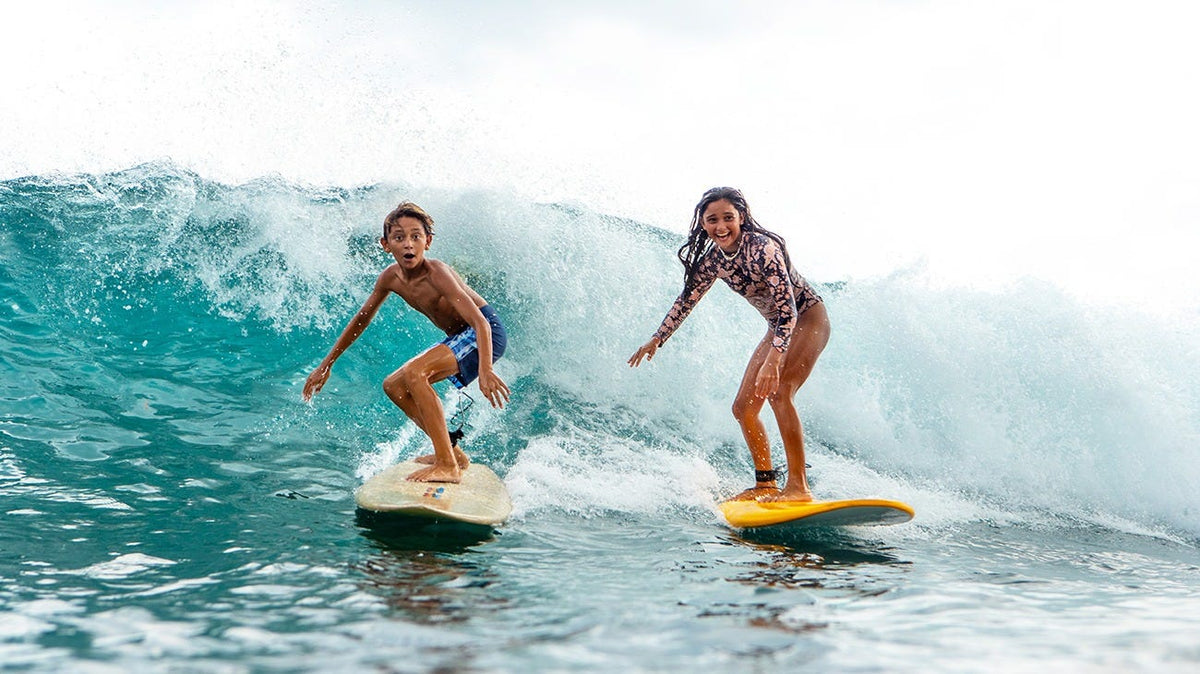
Learning to surf is as much a mental adventure as it is a physical one. Unlike other disciplines, it’s not just about mechanically repeating a movement. You need to understand the environment, read the waves, anticipate the movement of the water, and stay in tune with your body. This sport develops strength, balance, agility, and observational skills all at once.
Surfing is fascinating, but it can also be intimidating: fear of waves, of falling, of beginner’s mistakes… However, with the right advice, proper equipment, and a progressive approach, it is absolutely possible to start surfing safely and with pleasure. In this complete guide, we’ll walk you through every step to make your learning experience both effective and motivating.
Taking the first step: choosing your equipment
The ideal board for beginners
Choosing the right surfboard is essential. To learn how to surf, it’s best to go for a wide, long, and stable board—often called a softboard or foam board. This type of board is perfect for beginners because it offers excellent buoyancy, reassuring stability, and reduces the risk of injury.
The dimensions vary depending on height and weight, but in general, a 7 to 9-foot board works well for first lessons. Its thickness makes paddling and take-offs easier. Unlike resin boards, which are more technical, foam boards are soft, light, and more forgiving of positioning mistakes.
Some beginners may also start with a bodyboard, mainly to get used to the motion of waves and ocean reading. However, if your goal is to stand up and surf, it’s better to get a proper surfboard right away.
The importance of wetsuits and accessories
Thermal comfort is a key motivation factor, especially when starting out in cold water. A neoprene wetsuit lets you stay in the water longer without suffering from the cold. It also protects against chafing, sunburn, and small impacts.
In France, water temperature varies a lot by region and season: a 4/3 mm wetsuit is ideal for spring and autumn, while a 5/4 mm with a hood, gloves, and booties is necessary in winter, especially in Brittany.
Other must-have accessories include: the leash (the cord that connects the board to your ankle), surf wax (to make the board non-slip), a tail pad (for back foot grip), and sometimes a rash guard to prevent irritation.
Essential theory basics
Understanding the ocean: currents, tides, and waves
Before even stepping into the water, it’s crucial to understand how the ocean works. Surfing isn’t practiced on a fixed field—every day and every session is different. Waves depend on the swell, wind, tide, and seabed configuration.
Knowing how to read surf forecasts (Windguru, Surf Report, etc.), understanding tide cycles, identifying rip currents or dangerous zones are all part of the basics. Being able to read the waves will help you pick the right spots for your skill level.
Beach breaks (sandy bottoms) are the most recommended for beginners. Point breaks or reef breaks are more complex and usually reserved for experienced surfers.
Surf safety rules and etiquette
Like any sport, surfing comes with rules. There’s a real etiquette in the water that must be respected—for your own safety and that of others. Here are a few fundamental principles:
- The surfer closest to the peak (the point where the wave breaks) has priority.
- It’s forbidden to “drop in” on a wave already taken by someone else.
- Don’t paddle in the direct path of another surfer.
- Always keep an eye on those around you.
- Never let go of your board, even in the white water.
These rules are often reminded by surf instructors during lessons. Respectful behavior creates a good vibe in the water and prevents accidents.
First practical lessons
Getting into the water: warm-up and positioning
Every session should start with a proper warm-up. Stretching, core work, jumps, and rotations prepare your body for effort and prevent injuries. Plus, a warmed-up body reacts better to the unexpected: wipeouts, quick reactions, or strong paddling.
Before entering the water, always take a few minutes to observe the ocean. Watch how the waves break, where other surfers are, and where the currents flow. Position yourself in a safe zone, ideally where the wave forms gently. Starting in the white water is a good way to get comfortable without stress.
Mastering paddling and the take-off
Paddling is one of the most underestimated parts of surfing, yet it makes up 80% of the sport! Paddling efficiently saves energy, gets you to the waves faster, and sets you up better for take-offs.
The take-off—the move from lying down to standing—is one of the toughest steps for beginners. It requires coordination, explosiveness, and balance. It’s highly recommended to practice this move on the beach before hitting the water.
Riding your first wave: basic techniques
Once you catch a wave (usually white water when starting out), you need to pop up quickly and adopt the right stance: feet apart, knees bent, eyes looking forward. Never look down at your feet! Your weight should be evenly distributed with your torso slightly leaning forward.
Riding your first wave is an unforgettable moment. It’s a breakthrough—a unique glide feeling, a mix of focus and joy. Even if you fall, each attempt is progress. Don’t chase performance—focus on balance, timing, and listening to the wave.
Improving in surfing: tips for progress
Analyzing your sessions
Progress in surfing relies heavily on analyzing your mistakes. Filming your sessions, asking your instructor for feedback, discussing with other surfers, or keeping a surf log are all valuable tools to improve technique.
Every session is different. Noting conditions (wind, tide, type of waves), your feelings, successes, and struggles helps identify clear progress areas and prevents repeating the same mistakes.
The importance of cross-training for surfers
Surfing engages the whole body: back, shoulders, core, and legs. Complementary training outside the water is highly recommended. Yoga, for example, improves flexibility and breathing. Skateboarding or surfskating sharpens movement skills. Swimming builds endurance. Even simple core and balance exercises at home help improve performance on the board.
Cross-training is especially useful for surfers living far from the ocean—it keeps the body ready between sessions and prepares it for surfing-specific demands.
When and where to practice?
Choosing the best beginner-friendly spots
Not every spot is suitable for learning. It’s best to choose sandy beaches with a gentle slope and soft waves. In France, recommended spots include:
- La Torche (Brittany)
- Hendaye (Basque Country)
- Seignosse and Mimizan (Landes)
- Carcans and Lacanau (Gironde)
Abroad, destinations like Taghazout (Morocco), Bali, Portugal, or Costa Rica offer ideal conditions with many surf schools available.
Understanding the role of seasons and weather conditions
Surfing depends heavily on weather. A good session is determined by wave size, swell direction, wind strength, and tide. In summer, waves are often smaller—perfect for beginners. In winter, swells are more powerful and less accessible.
Check surf forecasts through specialized websites. Learning to read them is part of becoming a well-rounded surfer.
Joining the surfing community
Sharing experiences and learning from others
Surfing is an individual sport, but it thrives in community. Sharing a session, talking about your feelings, and progressing together is extremely rewarding. It builds bonds, team spirit, and solidarity.
Joining a group, enrolling in a school, or being part of a surf club also helps maintain motivation—especially at the beginning, when progress feels slow.
Online resources and surf schools
There are countless resources to learn surfing: blogs, videos, tutorials, podcasts.
However, nothing replaces the guidance of a certified instructor. Joining a surf camp, booking private lessons, or attending group classes helps avoid many mistakes and speeds up progress significantly.
